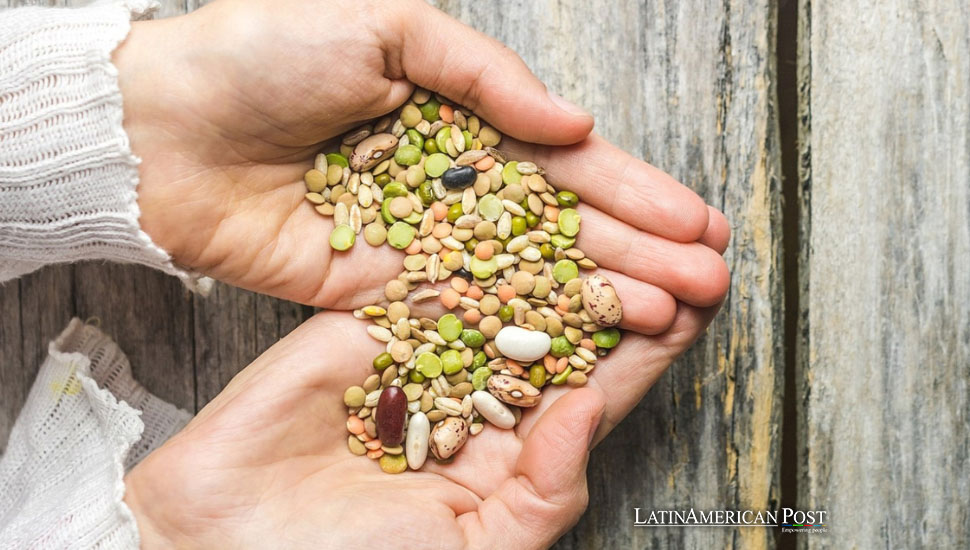El Niño Exacerbates Food Security Crisis in Central America

A recent study by the World Food Programme and Action Against Hunger reveals that El Niño has severely worsened food security for millions in Central America, particularly in the Dry Corridor, amid increasing climate change impacts.
In 2023, Central America faced one of its most challenging years as El Niño, a climatic phenomenon known for bringing prolonged droughts, severely impacted the region’s agriculture and food security. This impact was felt most acutely in the Dry Corridor, an area that stretches across several countries in the region and is home to over 10 million people.
El Niño is a part of the El Niño-Southern Oscillation (ENSO), characterized by the warming of sea surface temperatures in the Pacific Ocean. This warming affects global weather patterns and typically results in reduced rainfall in Central America, leading to drought conditions that devastate crops and, consequently, the livelihoods of local farmers. The World Food Programme (WFP) and Action Against Hunger (ACH) reported that the phenomenon has intensified in frequency and severity due to climate change, complicating efforts to predict and mitigate its effects.
The Dry Corridor: A Vulnerable Region
The Dry Corridor includes parts of Costa Rica, Nicaragua, Honduras, El Salvador, and Guatemala. It is predominantly inhabited by small-scale farmers who produce basic grains such as maize and beans. These farmers are especially vulnerable to climatic fluctuations due to their reliance on rain-fed agriculture and the marginal quality of their cultivated land.
In 2023, the Dry Corridor experienced one of its worst droughts in over four decades, with rainfall reaching historically low levels. This drought was followed by irregular heavy rains late in the year, which only partially alleviated the water scarcity but caused additional challenges such as localized flooding and crop damage.
Historically, Central America has been susceptible to various climatic adversities with significant social and economic repercussions. The region’s colonial and post-colonial history is marked by land disputes and the concentration of agricultural resources in the hands of a few, exacerbating vulnerability to environmental changes. Today, the impacts of El Niño are not just meteorological but deeply socio-economic, affecting the most marginalized communities who lack the resources to adapt to changing conditions.
The WFP and other international bodies have noted a worrying trend: the increased frequency of El Niño and La Niña events due to global climate change. This trend threatens to undo progress in food security and poverty reduction achieved over the past decades in Central America.
Current Situation and Response
In 2023, the WFP and ACH estimated that between 1.7 and 2.7 million people in El Salvador, Guatemala, Honduras, and Nicaragua would require food assistance by March 2024 due to the impact of El Niño. In Guatemala alone, 360,000 hectares of agricultural land in the Dry Corridor were adversely affected by the lack of rain, significantly impacting food production and elevating prices.
Governments and international agencies have been scrambling to respond to these challenges. The WFP’s strategy includes cash transfers, food assistance, and strengthening early warning systems and institutional capacities to better predict and respond to these climatic events.
Long-term Strategies and Innovations
Addressing the challenges El Niño poses requires a multifaceted approach that includes immediate relief and long-term strategies to build resilience. Innovations in agricultural practices, such as developing drought-resistant crop varieties and improved irrigation techniques, are critical. Additionally, there is a growing recognition of the need to enhance community-based resource management and integrate traditional knowledge with modern technology to create sustainable agricultural systems.
Also read: Alarming Rise in Amazon Fires Marks a Troubling Start to 2024
The recurrent episodes of El Niño and their intensification due to climate change pose a significant threat to the stability and progress of Central America, particularly in its most vulnerable regions like the Dry Corridor. The situation calls for a coordinated, innovative response that addresses immediate needs and works towards long-term sustainability and resilience. As the planet continues to warm, the lessons learned in Central America could provide valuable insights for other regions globally facing similar climatic challenges.





